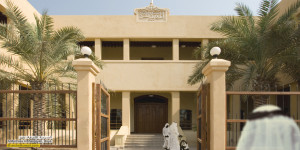“Saudi Arabia unveiled a $500bn plan on Tuesday to create a vast economic zone in the kingdom’s north-west, the most ambitious and expensive project in Riyadh’s efforts to diversify the oil-dependent economy. Details of the new city, called Neom, were released as Crown Prince Mohammed bin Salman hosted some of the world’s most powerful investors and bankers at a conference designed to showcase his vision to modernise the conservative kingdom and lure investment to the country…….”
Interesting and unprecedented things may be about to happen in Saudi Arabia, if the ruling crown prince keeps all his promises. Possibly positive things. It will have reverberations across the Arab world.
Saudi Crown Prince MBS seems to be impressed by the example of the United Arab Emirates, especially Dubai. It will be a tough sell in the Wahhabi heartland of Najd in Central Arabia. To diversify the economy also means to diversify the society, and open it not only economically, but also culturally. That is the most closed of Middle East societies.
So far there are signs that the top Wahhabi establishment is falling in line, but that may change: the prince had to incarcerate several mid-level but prominent Wahhabi clerics before he started talking of his version of Perestroika (perhaps not so much Glasnost for now).
A few independent Arab media outlets have been hinting for months that the new Saudi order is impressed with the economic experience of the UAE. At the same time, the substantial Islamist (mainly Wahhabi) opposition in exile has been warning and complaining that the ruling Crown Prince of Abu Dhabi in the UAE (an economically and culturally open Gulf state, definitely non-Wahhabi) has too much influence over the Saudi Crown Prince. There might be some truth in that, and it will create a dilemma for the Salafist movement from the Gulf to Egypt. Persian Gulf Salafis, who are practically Saudi proxies, have always been very critical of the openness of the UAE and its social and religious openness.
The domestic impact depends on success in keeping the population content, economically speaking. But times are hard, with oil revenues declining, and the weapons-selling pressures of Donald Trump are strong. Add to that the expensive and stalemated war in Yemen, and the new financial commitments to select remaining “friends” in Syria and Iraq.
So it may require disengagement in Yemen and reducing commitments in the Levant, as well as reducing the huge weapons deals with the Western powers. But then there is a catch in all that too: it might mean ceding the Northern Tier of the Arab world, the Levant/Fertile Crescent, to long-term Iranian influence. The Saudis already seem to have given up on Lebanon, where a Hezbollah-Christian coalition seems to have strengthened its hold on power.
Stopping the bleeding from Yemen will be a tough one: that country is the soft underbelly of the Arabian Peninsula, and a reasonable cause for worry. But war will not solve the Yemen problem, only some kind of political deal that is agreed upon by the Sanaa coalition and the Saudis. That still leaves the problem of Aden in secessionist-oriented Southern Arabia, now largely dominated by the UAE. And I haven’t even mentioned the expansion of AQAP and ISIS in Southern Yemen.
It would be quite interesting to see how the Wahhabi kingdom is transformed into a truly modern state (without the political opportunities of Glasnost).
(P.S: As for selling off the huge state oil company, ARAMCO, we can forget about that for now. My educated fatwa about ARAMCO? It will take much longer than two or three years or even five years to get it ready for privatization. IF it ever happens: I have seen similar films before in our Gulf region.)
Cheers
Mohammed Haider Ghuloum





